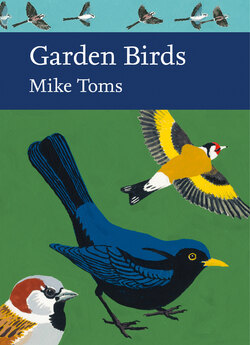Читать книгу Garden Birds - Mike Toms - Страница 7
Editors’ Preface
ОглавлениеGIVEN THE EXPLOSION OF INTEREST in garden birds, their habits and feeding since the 1960s, this is an addition to the New Naturalist Library that was crying out to be written. Many, perhaps most of us, are familiar with a range of garden birds on a day-to-day basis. That range may be large or small, but familiarity engenders an interest in how the birds are faring and an enthusiasm for taking part in censuses and surveys: ideal seeding ground for what are now called citizen science projects. Against this background, the Editorial Board was fortunate to be able to call on an author tailor-made for the task in Mike Toms. Mike will be familiar to NN readers as the author of the very popular and very readable text on owls (NN 125, 2014). He has spent most of his working life with the British Trust for Ornithology. Over and above his personal fascination with owls, he has been involved in the organisation and analyses of the various BTO Garden Bird studies and, thus, is the ideal author for this authoritative text.
The text opens with an analysis of the role of gardens in the ecology and general prosperity of our commoner land bird populations and an assessment of the diversity that we have created. Interestingly, though we think of gardens as ubiquitous, the land area that they occupy, at just over 400,000 ha, is only slightly larger than the county of Suffolk, and less than 10 per cent of British land area with some form of statutory protection. That said, the potential for interest and fascination that they offer, far outweighs those statistics. In the second chapter, Mike Toms explores the phenomenal growth of garden bird feeding since the end of the Second World War and the equally amazing diversity of foodstuffs now available, particularly seeds. Long gone are the days of throwing out a handful of scraps from the table to satisfy our feathered friends!
Subsequent chapters cover the provision of nesting opportunities, nest boxes and other aspects of the breeding season (Chapter 3), and the aptly-named ‘Opportunities and Risks’ (Chapter 4) outlines the disease health hazards (sometimes devastating) that birds face at feeding stations. Enthusiastic gatherings squabbling at feeders become vulnerable to lurking sharp-eyed predators like Sparrowhawks Accipiter nisus. Chapter 5, ‘Behaviour’, emphasises the opportunities (and privileges) on offer in gardens, to watch birds interacting at close quarters, and demonstrates how simply watching can develop into (equally enjoyable) studying, far more easily than in the general open countryside. Equally absorbing and fascinating are the varied aspects of garden bird watching in Chapter 6, ‘Birds, Gardens and People’, which, among other things, emphasises the many benefits, including to physical and mental health, that people can derive from the interactions.
The last chapter is an extremely useful compendium of succinct accounts of the most regularly observed garden birds, with, in each case, tabulated biological data (clutch size, incubation period, breeding attempts per annum, etc.) followed by an account of the particular relevance of the species to our gardens. It lists, without fear or favour, ‘the good, the bad and the ugly’ of garden birds and items of fascination too numerous to note, other than to offer examples. Few outside the southeast of England would have considered the Ring-necked Parakeet Psittacula krameri as a garden bird, but these raucous and colourful aliens (although now with a self-sustaining feral population) can be a domineering force disrupting the feeding and nesting of other species. The Magpie Pica pica, not a popular garden bird, has its evil reputation as a predator of nests and nestlings accurately assessed, and moderated. Perhaps strangest of all, the Red Kite Milvus milvus – which most of us would consider an unlikely garden bird – is now numerous enough near its centres of reintroduction to visit garden feeding stations routinely, and some populations are showing signs of dietary imbalance, the natural food of carcasses, road kills etc. being substantially better for them than the household waste scraps usually on offer in gardens.
Much else of equal fascination awaits – now please do read on and enjoy Garden Birds to the full.
